Triad Dyeing Part 2 | 66 Colors From 3 Fluorescent Primaries
Featuring: Knomad Marshmallow DK 20 Gram Minis; 100% 21.5 Micron Superwash Merino
Our Goal: To create an all-fluorescent 66 color triad dye study from 3 fluorescent primaries
Abstract: There’s a new blacklight reactive blue on the market (a first) so we’re going to build a 66-color triad dye study from a fluorescent pink, yellow and blue. In part 1, we balanced each color to the same optical strength so no one color overtakes another. In part 2, we’re taking that formula and calculating 66 different values. The external legs of the triad are between 2 colors, the internal triangle is a mix of all 3. This blog post is not a theory of how to build a triad, but a recipe for you to follow along with at home to create this particular color study. Triad dyeing is very complicated math that is outside the scope of what a blog post can cover. If you want to know more about how the math is calculated, please see my YouTube video from 4 years ago on triad dyeing.
For those with time to read the finer details, let’s dive in!
YOU WILL NEED:
-66 Marshmallow DK mini skeins
– 1 ml syringe
-10 ml syringe
-Gloves
-Respirator
-Double Burner Induction Cooktop
-18 Glass Pint Jars
-Acid-Reactive Dye from Pro Chem Washfast acid in Hot Pink, Flavine Yellow and Jacquard Blacklight Blue
-Laminated jar tags and string to tie them on with
-8” deep stainless steel restaurant tray
-Citric Acid
-Gram Scale
-Synthrapol textile detergent
Fill an 8” deep tray with 2 gallons of warm water and 1 tsp of Synthrapol. Carefully untwist the minis and lay them across in a straight line so they can be easily picked out without tangling. Let the minis soak overnight so they’re thoroughly wet.
While the minis are soaking, laminate a page with the following dye concentrations on it, hole punch and attach to your dye jar. This is how we will be keeping track of our percentages. I highly recommend highlighting the amount of each color with the corresponding sharpie highlighter to help keep each formula easily readable while measuring out 198 precise amounts.
You can copy and paste these values into an excel document or just print this triad picture, laminate, hole punch and attach to the jar. We’re using the Hot Pink at .75% dos, Flavine Yellow at .30% dos and Blacklight Blue at 2% dos. It would be way easier to calculate everything at 1%, but the triad would be very yellow-focused and out of balance due to the potent strength of the yellow.
Next, we mix our dye stock. The recipe is 10 grams of dye powder in 1000 ml of water. I chose Pro Chem Hot Pink and Flavine Yellow because they are in my opinion the best-performing fluorescent primary pink and yellow on the market. You can swap these 2 out for a fluorescent pink and fluorescent yellow from whatever dye brand you have on hand, but you will not get these exact results with different formulations.
My 8” deep tray can hold 18 pint jars, so I did batches of 18. I started with the external triad legs, which are between 2 colors, and did all the pink values first, then the yellow, then the blue. Make sure to rinse your syringes very well between color changes. I fill the tray with hot water to about an inch from the top of the jar and let sit on the induction burner for 45 minutes at 300 degrees Fahrenheit. Let cool to room temperature, rinse each skein individually, and attach the laminated recipe to each skein as you go.
Here’s our external triad legs, which is 9 different oranges between the pink and yellow, 9 different greens between the yellow and blue, and 9 different purples between the pink and blue.
Here’s the internal colors, which are a mix of all 3 and therefore a more shaded, neutral leaning version of the exterior legs. The external triangle legs are “neon rainbow” and the internal triangle legs are more “autumnal rainbow” since there’s some amount of yellow, blue, and pink in each one that is canceling out one of the other shades to some degree.
I wound each color on a floss bobbin, printed/taped out the recipe on the top, then mounted them in a coin-collectors pouch. I also laminated an “at a glance” chart where I crocheted the yarn to a laminated page with the recipe so I can see all 66 colors right next to each other when colorway planning.
Here’s how the Triad looks under a blacklight:
Notice how the pink and yellow clearly fluoresce pink and yellow, and that the increasing saturation point shows under blacklight? Notice how the “blue” remains consistent regardless of how much dye powder was used and fluoresces very little compared to the other two colors? My personal opinion is that this is not a truly blue fluorescent dye pigment, but a small amount of blue dye put into an optical brightening powder of some sort. To the naked eye, while photographing this, it doesn’t even glow blue, but white.
Shaded internal Rainbow #2
Shaded internal Rainbow #3
I hope you enjoyed seeing all the beautiful colors we can create from these 3 fluorescent primaries, and that you picked up a good organizational system to store your new dye recipes.
Until next time,
Nic
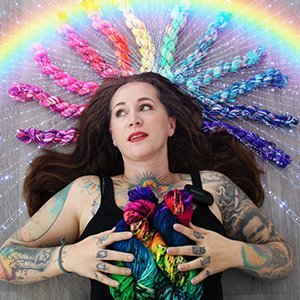

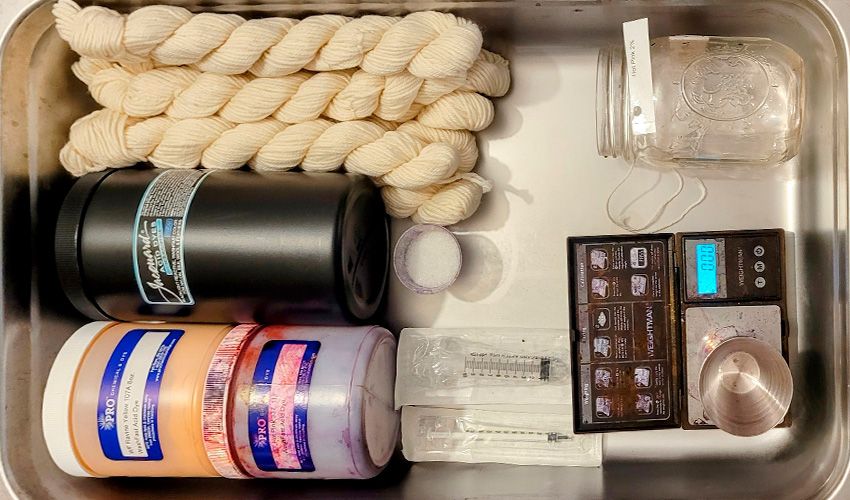











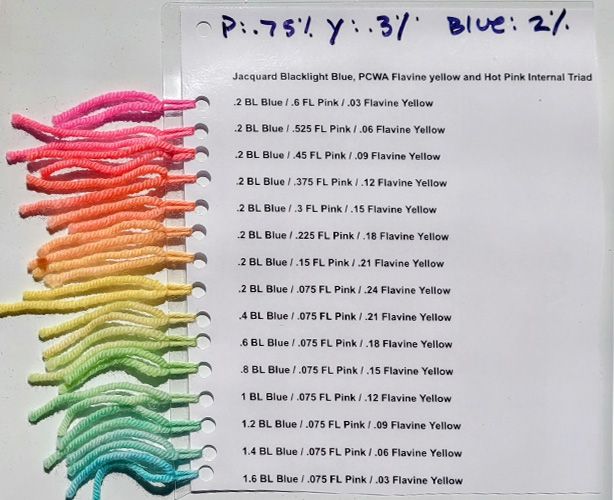


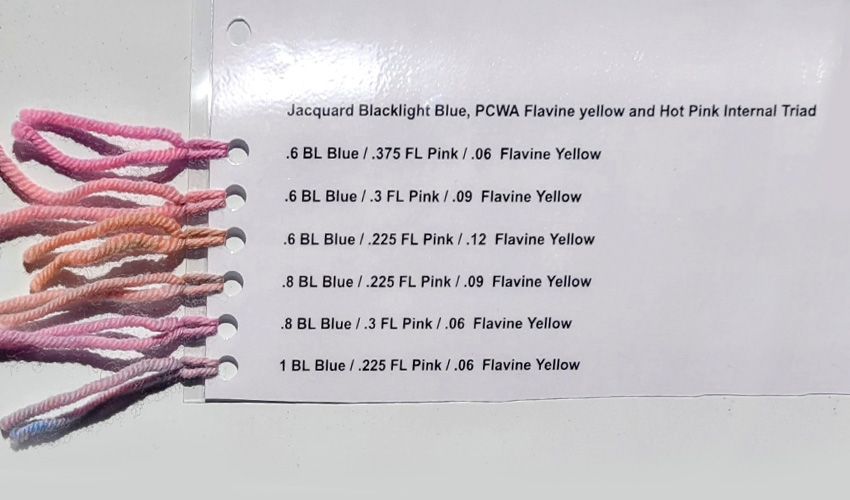
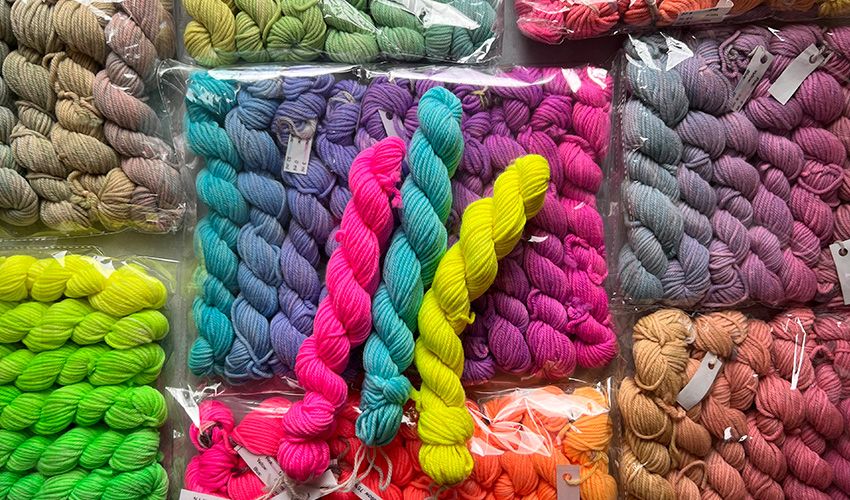






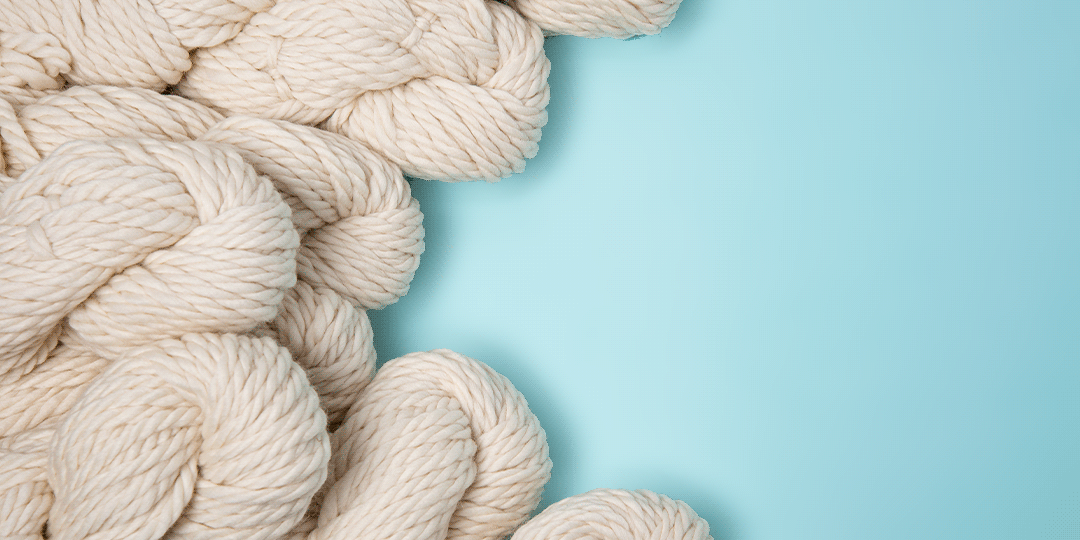

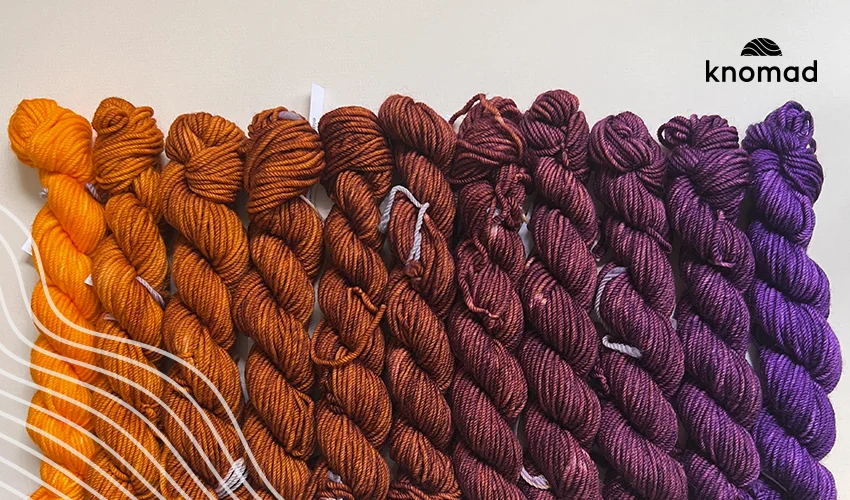
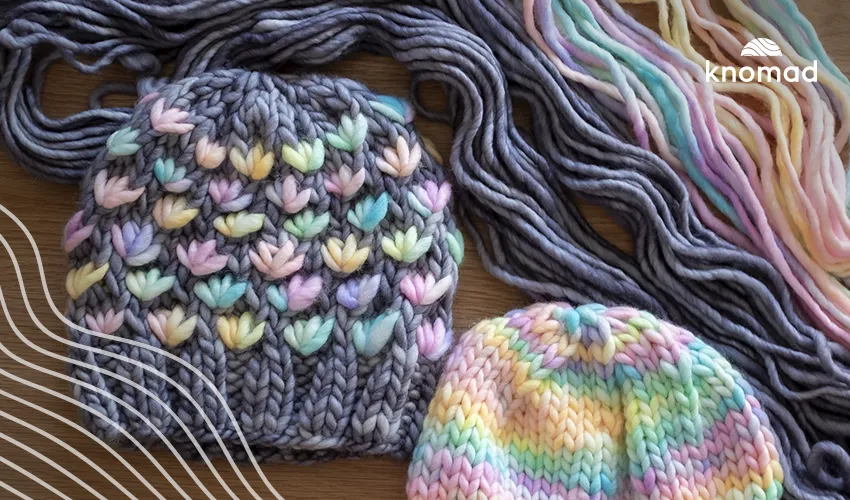
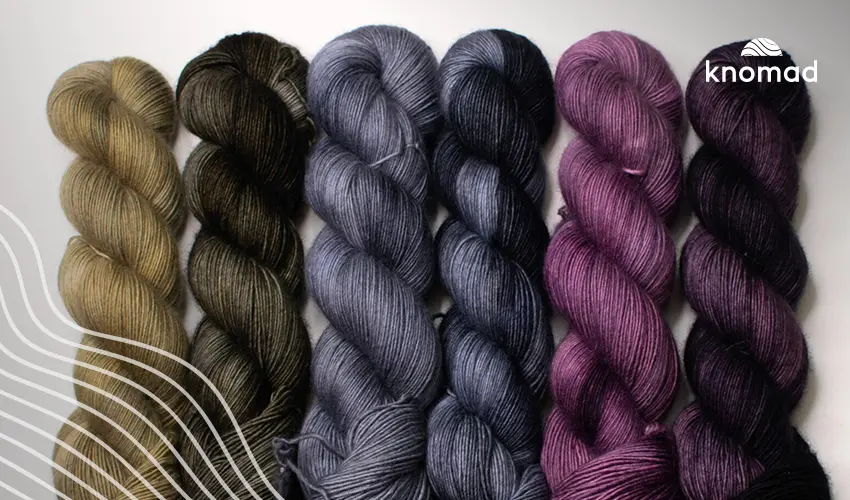
You are amazing, Nicole!